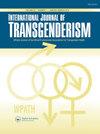评《跨性别儿童与性别不符合儿童的后续研究与“坚持”理论述评》
Q1 Social Sciences
引用次数: 24
摘要
Temple Newhook et al.(2018)的文章《关于跨性别儿童和性别不符合儿童的后续研究和“坚持”理论的批判性评论》呼吁放弃对性别变异儿童发展的纵向研究,因为它们不尊重儿童的自主性。一些相对较新的研究受到了批评,得出的结论是,进行纵向性心理结果研究和承认孩子的感受是矛盾的。我们同意目前可用的纵向研究有其局限性。然而,我们强烈反对作者的观点,即应该放弃对性别变异儿童发展的研究,我们的研究没有认真对待儿童的需求和声音,或者是不道德的。在我们处理和讨论他们的文件中的一些具体批评之前,我们首先有两点一般性但至关重要的评论。作者在论文的一开始就声称,性别焦虑症(GD) 80%的持续率是一个很大程度上来自四个后续研究的估计:一个来自加拿大(Drummond, Bradley, Peterson-Badali, & Zucker, 2008),三个来自荷兰(Steensma, Biemond, de Boer, & Cohen-Kettenis, 2011;Steensma, McGuire, Kreukels, Beekman, & Cohen-Kettenis, 2013;Wallien & Cohen-Kettenis, 2008)。不幸的是,作者似乎并没有完全意识到患病率数字背后的历史。Zucker和Bradley(1995)首次对性别变异儿童的性心理结果的历史随访研究进行了全面和包容的总结。后来,Steensma等人(2011)更新了这些数字,Ristori和Steensma(2016)再次更新并进一步讨论了这些数字。值得一提的是,在计算文献中的总体持续率时,从未使用Steensma et al.(2011, 2013)的两项研究。在我们看来,将Steensma等人的两项研究纳入作者关于持久性的讨论(特别是在Temple Newhook等人2018年的表1中)是一个奇怪的选择,而且在方法上是不正确的。这两项研究没有被纳入的原因很明显:这两项研究的目的都不是报告GD持续或持续的患病率。2011年对25名参与者进行的定性研究旨在:本文章由计算机程序翻译,如有差异,请以英文原文为准。
A critical commentary on “A critical commentary on follow-up studies and “desistence” theories about transgender and gender non-conforming children”
The article entitled “A critical commentary on followup studies and “desistence” theories about transgender and gender non-conforming children” by Temple Newhook et al. (2018) is a plea to abandon longitudinal studies on the development of gender variant children as they do not respect children’s autonomy. A few relatively recent studies are criticized and it is concluded that conducting longitudinal psychosexual outcome studies and acknowledging the children’s feelings are contradictory. We agree that the longitudinal studies currently available have their limitations. We do, however, strongly disagree with the authors that studies on gender variant children’s development should be abandoned and that our studies do not take children’s needs and voices seriously or are unethical. Before we address and discuss a number of specific criticisms in their paper, we first have two general, but crucial, remarks. The authors claim in the very beginning of their paper that the 80% desistence rate of gender dysphoria (GD) is a number that is largely drawn on estimates from four follow-up studies: one from Canada (Drummond, Bradley, Peterson-Badali, & Zucker, 2008) and three from the Netherlands (Steensma, Biemond, de Boer, & Cohen-Kettenis, 2011; Steensma, McGuire, Kreukels, Beekman, & Cohen-Kettenis, 2013; Wallien & Cohen-Kettenis, 2008). Unfortunately, the authors do not seem to be entirely aware of the history behind the prevalence numbers. The first comprehensive and inclusive summary of historical follow-up studies on the psychosexual outcome in gender variant children was provided by Zucker and Bradley (1995). Later, these numbers were updated in Steensma et al. (2011) and updated again and further discussed in Ristori and Steensma (2016). Important to mention here is that in the calculation of the overall persistence rate in the literature the two studies by Steensma et al. (2011, 2013) were never used. Including the two Steensma et al. studies in the discussion about persistence rates by the authors (particularly in Table 1 in Temple Newhook et al. 2018) is in our view an odd choice and a methodologically incorrect one. The reason why both studies were not included is obvious: both studies did not aim to report on the prevalence of desistence or persistence of GD. The qualitative study in 2011, conducted among 25 participants, aimed to:
求助全文
通过发布文献求助,成功后即可免费获取论文全文。
去求助
来源期刊

International Journal of Transgenderism
Social Sciences-Gender Studies
CiteScore
5.10
自引率
0.00%
发文量
0
期刊介绍:
International Journal of Transgenderism, together with its partner organization the World Professional Association for Transgender Health (WPATH), offers an international, multidisciplinary scholarly forum for publication in the field of transgender health in its broadest sense for academics, practitioners, policy makers, and the general population.
The journal welcomes contributions from a range of disciplines, such as:
Endocrinology
Surgery
Obstetrics and Gynaecology
Psychiatry
Psychology
Speech and language therapy
Sexual medicine
Sexology
Family therapy
Public health
Sociology
Counselling
Law
Medical ethics.
 求助内容:
求助内容: 应助结果提醒方式:
应助结果提醒方式:


